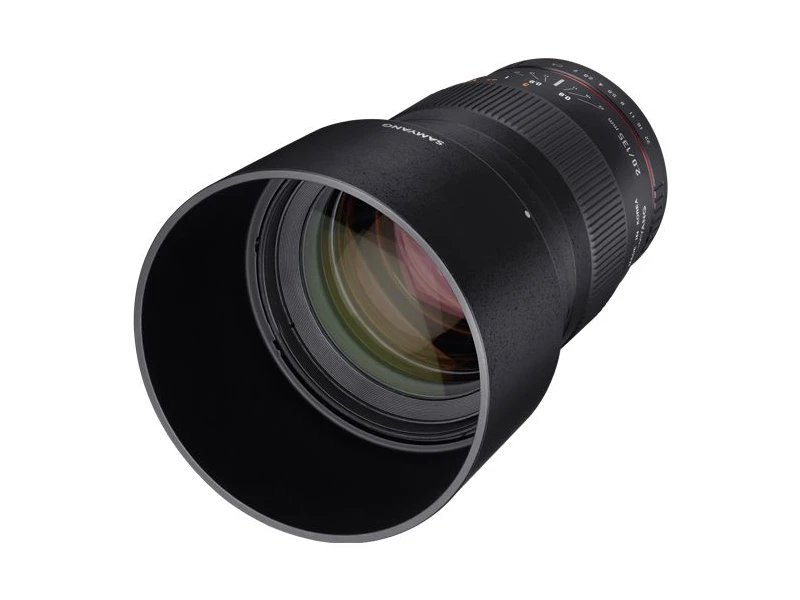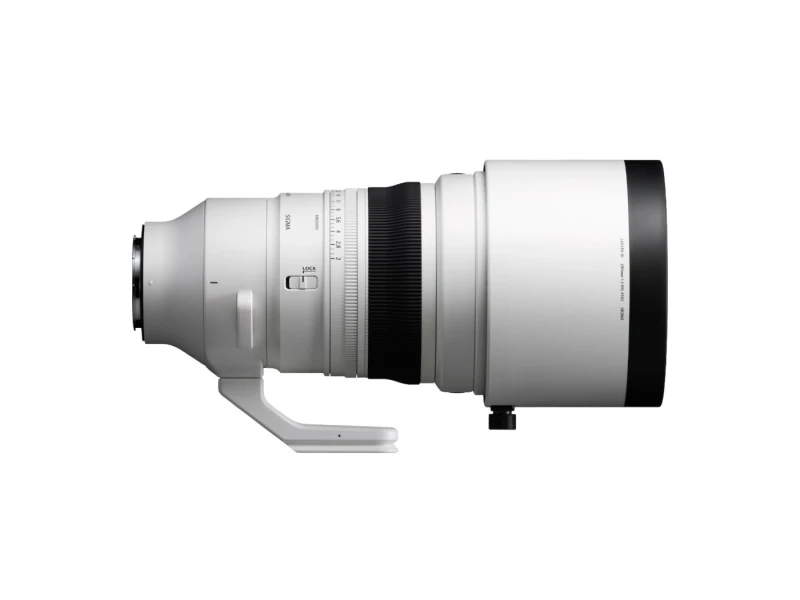Samyang 135mm f/2 ED UMC (Canon EF Mount) vs Sigma 200mm f/2 DG OS Sony E
Samyang 135mm f/2 ED UMC (Canon EF Mount) vs Sigma 200mm f/2 DG OS Sony E
When comparing Sigma 200mm f/2 DG OS Sony E and Samyang 135mm f/2 ED UMC (Canon EF Mount), which one is better?
1. Lens Mount Comparison
The lenses each feature different lens mounts — the Samyang 135mm f/2 ED UMC - (Canon EF Mount) features a Canon EF while the Sigma 200mm f/2 DG OS - Sony E features a Sony E — and because of this the preference varies. If you have a compatible camera, then of course that lens will be a better choice for you.
Winner: Tied — It depends on your gear
Regarding lens mount: Popular lens mounts are Canon RF and EF, Micro Four Thirds and Nikon Z. Different lens mounts lets you connect different lenses to camera bodies, but some might not be compatible. This can be helped by using an adapter, like a Canon EF to RF adapter.
2. Largest Aperture Comparison
Both lenses share the same aperture of 2 — this means that you may buy both Samyang 135mm f/2 ED UMC - (Canon EF Mount) and Sigma 200mm f/2 DG OS - Sony E in this regard; they''re the same.
Winner: Tied
Regarding largest aperture: A lower aperture number means that the widest aperture on the lens is larger. This means that more light will hit the sensor and also that the depth of field will be shallower, better separating your subject from the background.
3. Lens Type Comparison
Both lenses are Prime lenses, which means that you can choose both Samyang 135mm f/2 ED UMC - (Canon EF Mount) or Sigma 200mm f/2 DG OS - Sony E if you're looking for that type of lens.
Winner: Tied
Regarding type: There are two types of lenses; zoom lenses and prime lenses. Prime lenses have a fixed focal length and cannot be zoomed, while zoom lenses have a focal length range and can be zoomed in to get closer to the subject. Prime lenses are usually lighter, cheaper and let in more light. Zoom lenses are more versatile but are more expensive since they require a more advanced lens design.
4. Stabilization Comparison
Sigma 200mm f/2 DG OS - Sony E features built-in image stabilization and Samyang 135mm f/2 ED UMC - (Canon EF Mount) does not. Depending on your shooting style, this may be a heavy factor to choose Sigma 200mm f/2 DG OS - Sony E instead of Samyang 135mm f/2 ED UMC - (Canon EF Mount).
Winner: Sigma 200mm f/2 DG OS Sony E
Regarding image stabilization: When a lens features built-in stabilization, it will actively help you hold the image steady by adjusting the optical elements inside the lens to compensate for movements. Do remember that lens stabilization is not required, but it may be suitable depending on your specific needs.
5. Autofocus Comparison
In regards to autofocus, the winner is Sigma 200mm f/2 DG OS - Sony E since the other lens in this comparison, the Samyang 135mm f/2 ED UMC - (Canon EF Mount) does not have autofocus at all — it is a manual focus lens.
Winner: Sigma 200mm f/2 DG OS Sony E
Regarding autofocus: Lenses with autofocus help you focus when shooting pictures or video. If a lens only has manual focus it means that you have to focus manually by adjusting the focus wheel on the lens. Most cinema lenses do not use autofocus and are manual focus only.
6. Macro Comparison
Neither Samyang 135mm f/2 ED UMC - (Canon EF Mount) or Sigma 200mm f/2 DG OS - Sony E are macro lenses.
Winner: Tied — Neither have this feature
Regarding macro: Macro lenses can focus much closer to your subjects and might be suitable when photographing flowers, insects, wildlife and nature.
Specifications
Full specifications table of Samyang 135mm f/2 ED UMC (Canon EF Mount) and Sigma 200mm f/2 DG OS Sony E:
| Samyang 135mm f/2 ED UMC - (Canon EF Mount) | Sigma 200mm f/2 DG OS - Sony E | |
 |  | |
| Brand | Samyang | Sigma |
| Weight | Missing | 1800 g |
| Lens Mount | Canon EF | Sony E |
| Focal Length | 85 mm | 200 mm |
| Largest Aperture | 2 | 2 |
| Anamorphic | Missing | No |
| Minimum Focus Distance | Missing | 170 cm |
| Type | Prime | Prime |
| Aperture Range | Missing | 2 - 22 |
| Filter Thread Diameter | Missing | 105 |
| Aperture Blades | Missing | 11 |
| Lens Groups | Missing | 14 |
| Lens Elements | Missing | 19 |
| Image Stabilization | No | Yes |
| Autofocus | No | Yes |
| Macro | No | No |
| Weather Seal | Missing | Yes |
| Full Frame Coverage | Missing | Yes |
| Lens Hood Included | Missing | Yes |
| Stabilization Type | Missing | Sigma Optical Stabilizer (OS) |
